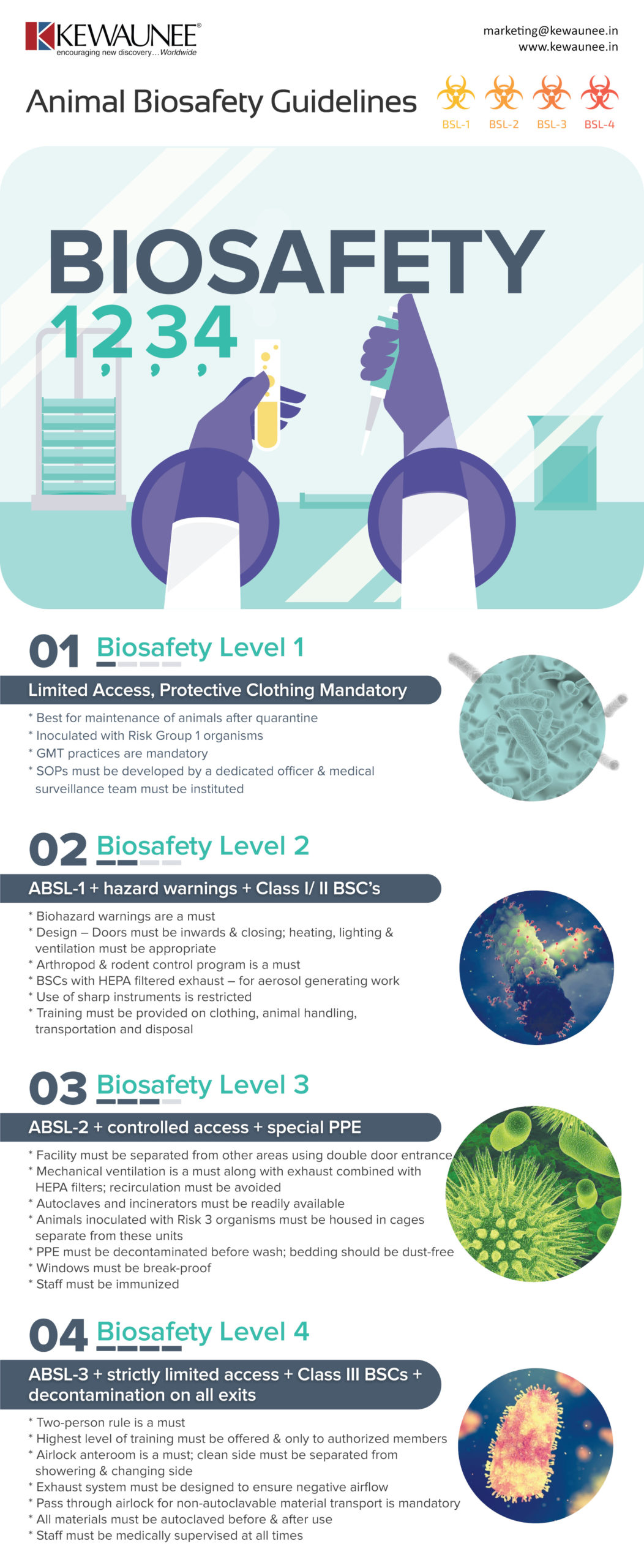Animal Biosafety Guidelines
While we’ve heard of biosafety guidelines for laboratory personnel, there’s another perspective for studies that involve animals. These guidelines ensure that any animal studies that incorporate the use of harmful & contagious organisms are as secure as possible.
In this infographic, we’ll look at the various biosafety levels and what guidelines we must follow.
If you’re looking for a readymade biosafety facility for your organization, get in touch with us at Kewaunee International today!
| Types |
Level of Access |
Guidelines |
| ABSL-1 |
Limited access, protective clothing mandatory |
- Best for maintenance of animals after quarantine
- Inoculated with Risk Group 1 organisms
- GMT practices are mandatory
- SOPs must be developed by a dedicated officer & medical surveillance team must be instituted
|
| ABSL-2 |
ABSL-1 + hazard warnings + Class I/ II BSCs |
- Biohazard warnings are a must
- Design – Doors must be inwards & closing; heating, lighting & ventilation must be appropriate
- Arthropod & rodent control program is a must
- BSCs with HEPA filtered exhaust – for aerosol generating work
- Use of sharp instruments is restricted
- Training must be provided on clothing, animal handling, transportation, and disposal
|
| ABSL-3 |
ABSL-2 + controlled access + special PPE |
- Facility must be separated from other areas using double door entrance
- Mechanical ventilation is a must along with exhaust combined with HEPA filters; recirculation must be avoided
- Autoclaves and incinerators must be readily available
- Animals inoculated with Risk 3 organisms must be housed in cages separate from these units
- PPE must be decontaminated before wash; bedding should be dust-free
- Windows must be break-proof
- Staff must be immunized
|
| ABSL-4 |
ABSL-3 + strictly limited access + Class III BSCs + decontamination on all exits |
- Two-person rule is a must
- Highest level of training must be offered & only to authorized members
- Airlock anteroom is a must; clean side must be separated from showering & changing side
- Exhaust system must ensure negative airflow
- Pass through airlock for non-autoclavable material transport is mandatory
- All materials must be autoclaved before & after use
- Staff must be medically supervised at all times
|
Source: Laboratory Safety Guidelines (WHO, 2004)
Kewaunee, the global leader in total laboratory solutions, empowers organisations to achieve competitive advantage through safe, efficient, and contemporary laboratories. In existence since 1906, Kewaunee powers the laboratories for over 5,000 customers in more than 100 countries.











